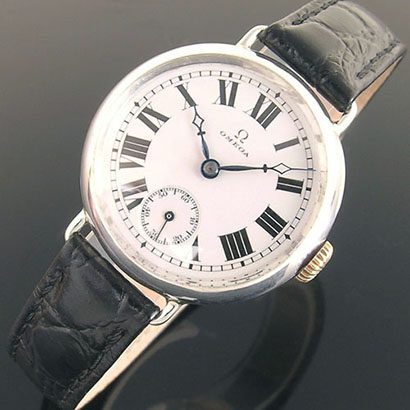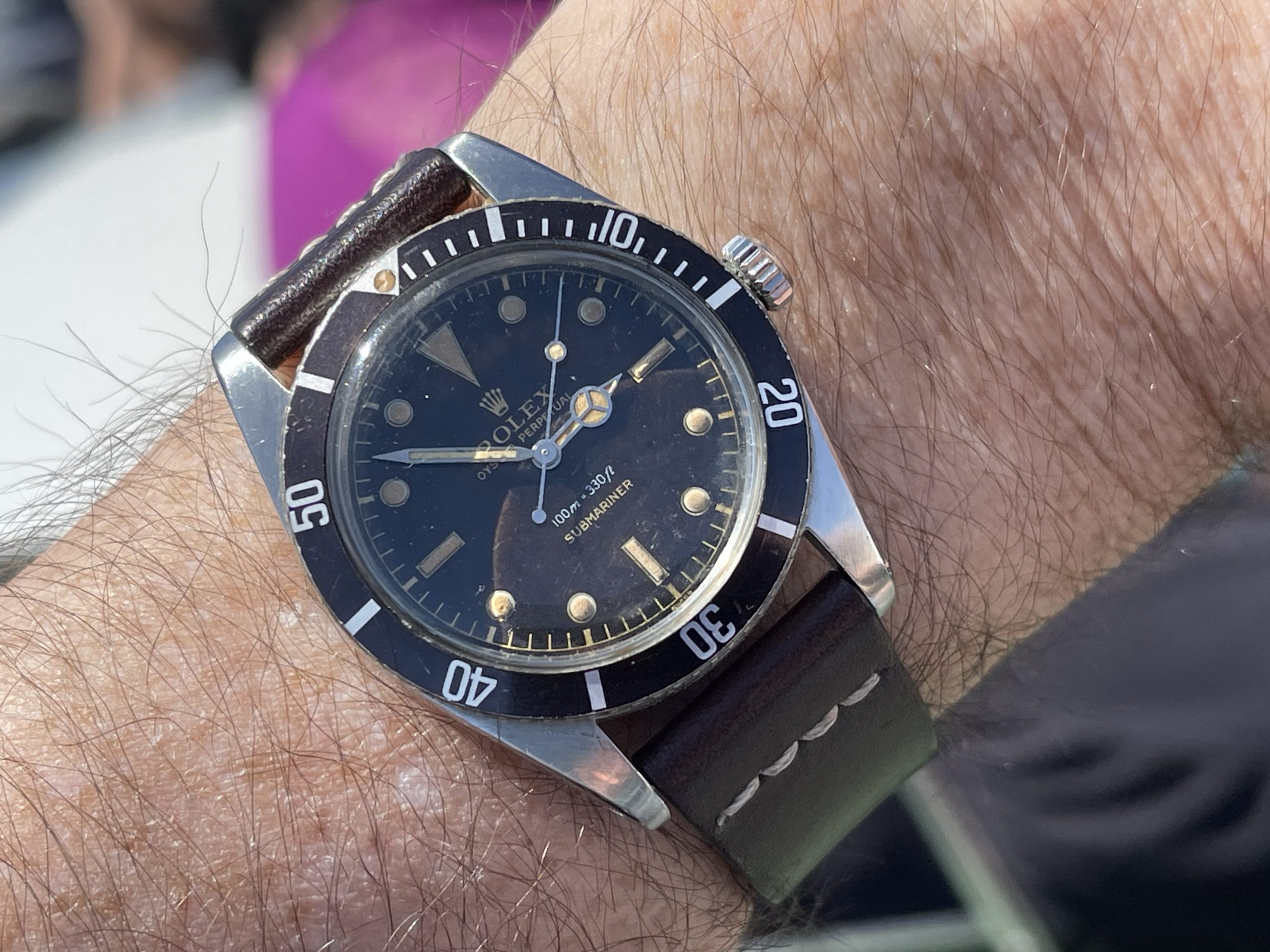COMPLICATIONS WITHIN WATCHMAKING:
THE CALENDAR FUNCTION
In this series of blog posts, we intend to create a helpful resource explaining the purpose behind the array of complications present on both vintage and modern watches.
In watchmaking, a complication is defined as any function that exists in addition to the time-telling abilities of an hour, minute and second hand. Complications are extra functions that are performed by the movement and displayed either visibly on the dial of the watch or audibly through chimes.
Today, we’re looking at complications that display some or all of the functions of a calendar – broadly, that’s dates, days, months and years.

Date
The simplest but perhaps most useful complication in all of watchmaking, a date complication is a cycling indicator that engages once every 24 hours, indicating the date within a 31-day cycle. Date complications can be displayed in a number of ways such as a subsidiary dial, a pointer date (fourth hand) or, most commonly, a dial cut-out (or aperture) like on this charming little Omega.

Image: A 35mm Omega Cal.2892-2 in 18ct from 1985 – currently available in our shop.
Quickset or ‘rapid calendar advance’ function
First implemented in the 1950s, the quickset function, or ‘rapid calendar advance’, allows a watches’ owner to adjust the date indicator more rapidly than on traditional calibres where repeatedly rotating the hour hand through a 24-hour cycle was the only way to progress the date. Semi-quickset functions involve repetitively moving the hands forwards and backwards over the midnight position to progress the date indication.
Most calibres that feature a date complication have to be manually adjusted at the end of each of the 5 months that have less than 31 days in. Adjustment is often operated via the crown, however, some calibres implement pushers to progress the date onwards.
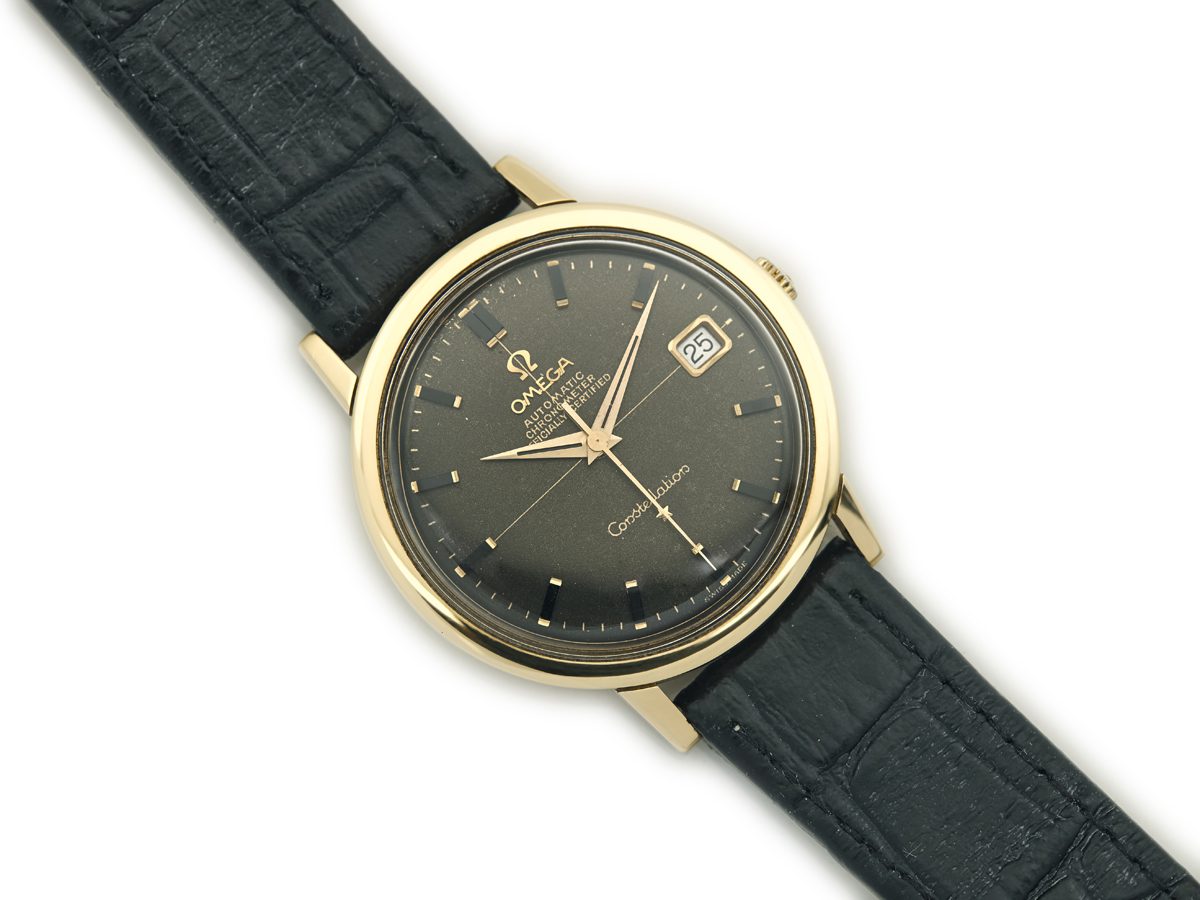
Date-setting tip!
While many modern calibres implement a spring-loaded date mechanism to avoid damage during manual setting, it’s always safest to move both hands to the six o’clock position before adjusting the date yourself.
Day & date
A watch with a day-date complication allows the wearer to see the day of the week as well as the date. Most watches featuring the complication use one or two dial cutouts to display the information, however, it’s not uncommon to find watches that use subdials instead.
The complication was first introduced in 1956 by Rolex on the now infamous Day-Date – initially available exclusively in yellow gold or platinum. The Day-Date quickly became something of an icon, earning the nickname ‘President’ after being spotted on the wrists of world leaders such as LBJ. The day wheel on the current model, launched in 2019, is offered in 26 different languages – a good indicator of just how universally adored the Day-Date has become.

Image: A stunning Rolex Day-Date ref:1803 from 1958 – currently available in our shop.
Moonphase
The next complication that comes under the umbrella of calendars is the moonphase indicator. This complication shows the stage of the lunar month by displaying a proportion of, or all of an illustration of the moon in a night’s sky through a semi-circular aperture. While technically functional, the moonphase indicator is not particularly important from a practical standpoint (you won’t find one on a G-Shock) but for many, that’s not the point. Moonphase indicators are most commonly found on high-end dress watches where the complication offers brands an extra chance to add texture, colour and imagery on what is ordinarily a fairly simple dial design.
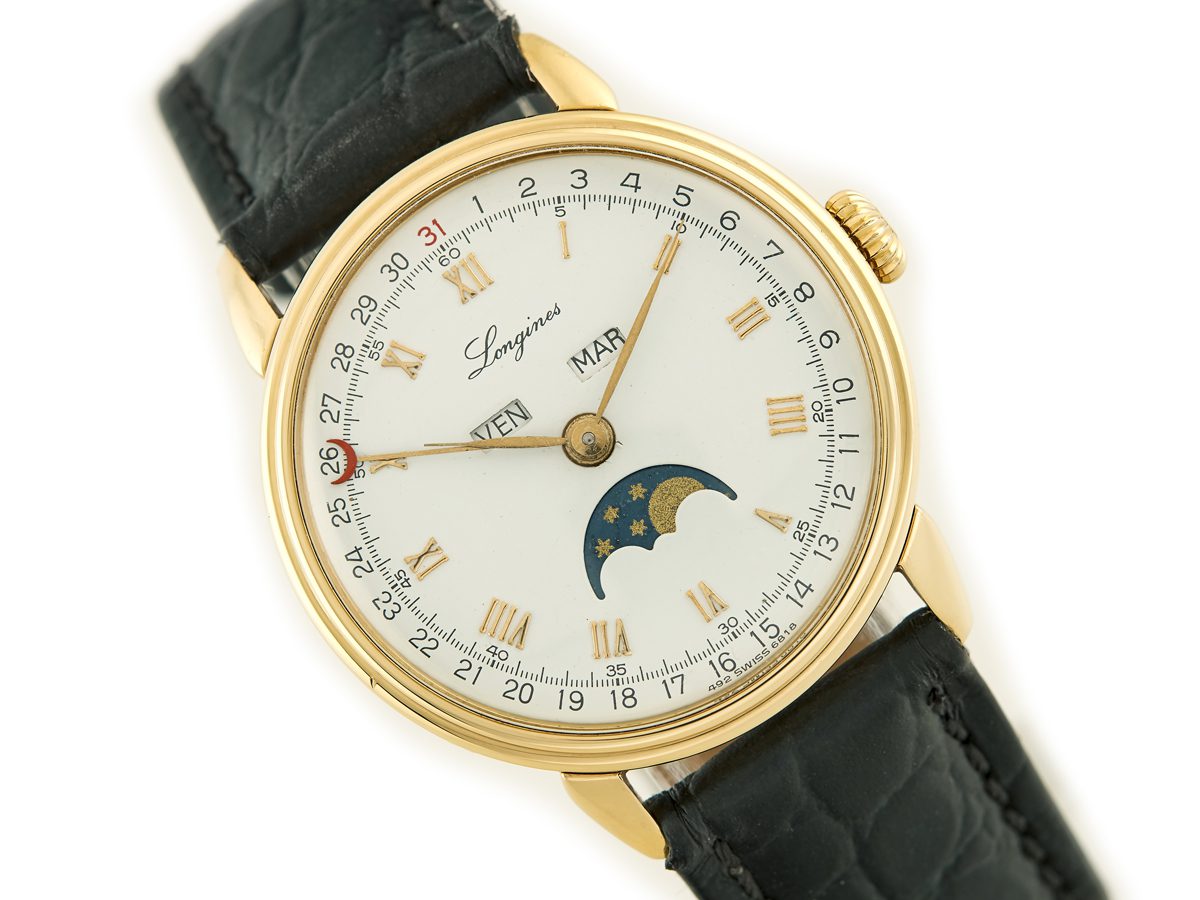
Image: A 1989 Longines Moonphase in 18ct Gold – currently available in our shop.
Triple calendar & annual calendar
Next, we have the triple calendar and the annual calendar. From the surface, these two complications execute the same function: to display the day, date and month of the year. The difference between these two complications comes down to how regularly they have to be manually adjusted. Triple calendars have to be adjusted in every month that has fewer than 31 days. The annual calendar, on the other hand (or wrist), adjusts the date automatically and only requires manual correction once a year (in pesky February with its 28 days).

A Movado Cal.475 Triple Date Calendar from 1949 – currently available in our shop.
Perpetual calendar
The final, and most prestigious complication serving the calendar function is that of the perpetual calendar. This complication shows the date, day, month, and year. More importantly, it automatically takes into account and adjusts for leap years, with a perpetual lever engaging on a four-year basis in order to add a 29th date in February around twenty-four times per century.
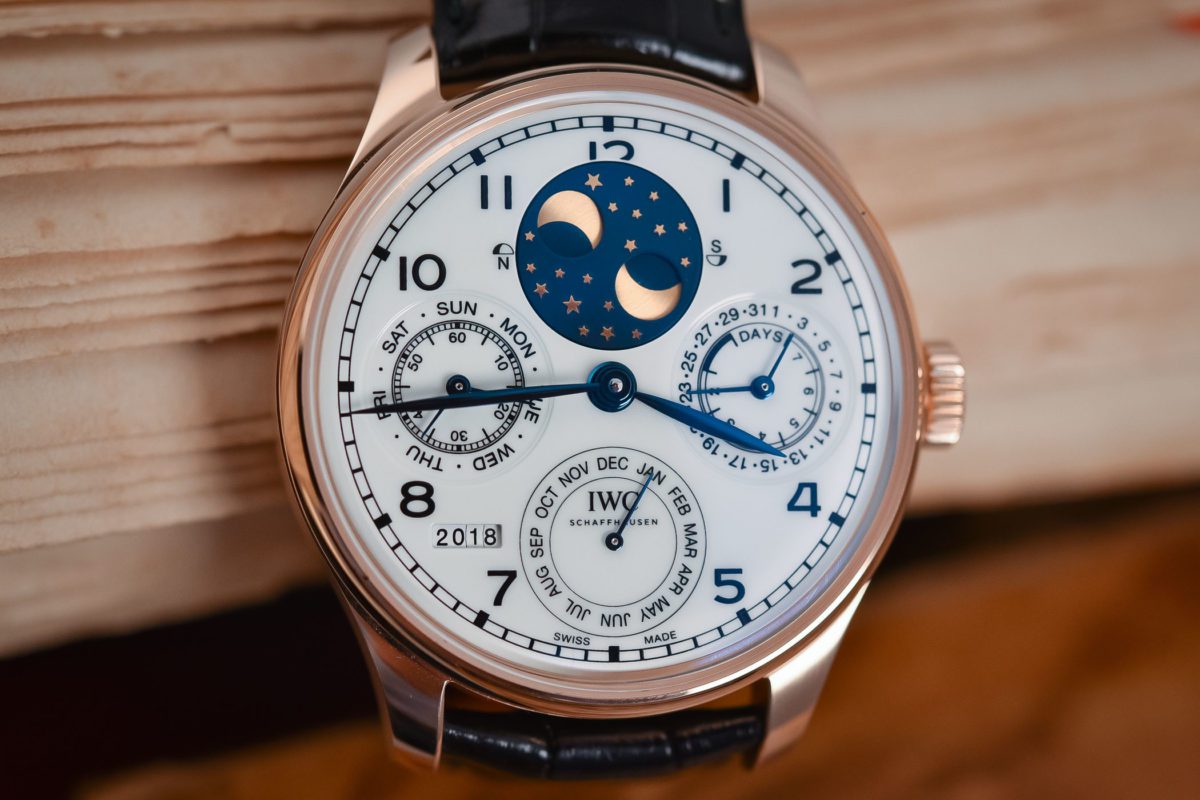
Image: An IWC Perpetual Calendar ref: IW503405 (Credit – Monochrome).
Technically, a perpetual calendar watch will only require manual adjustment once every century to account for when the leap year is bypassed, however, due to their intense mechanical complexity, most perpetual calendars have a service interval of between three and eight years.
Modern perpetual calendars from heritage brands such as IWC are sold with a glass vial containing a century slide. The purpose of this is to ‘futureproof’ the watches’ year indicator, meaning that when the year 2200 rolls around, your great, great-grandson can get in his spaceship, fly to the nearest planet where there’s a good watchmaker and get the century slide changed over, ready for the 300 years to follow. I’m not sure what his great, great, great-grandson will do after that. Probably buy a new watch?
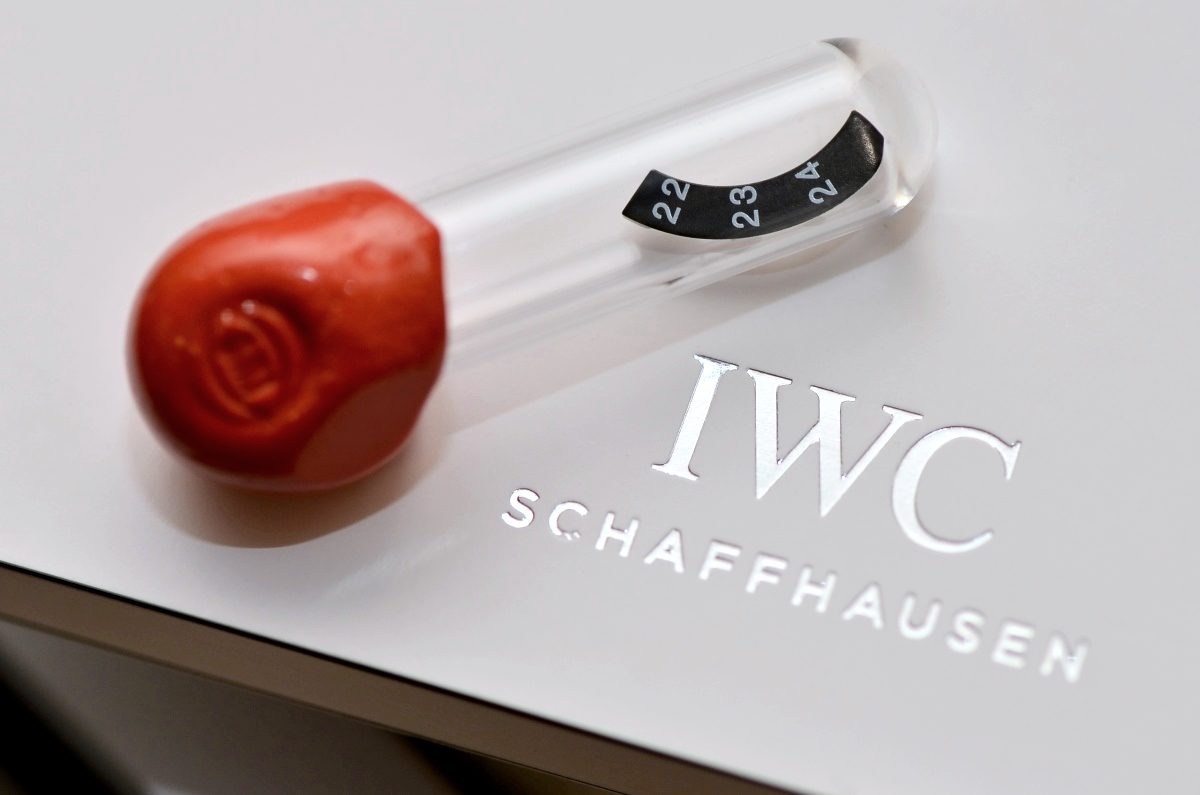
Image: The extra century slide provided in the box with the IWC Portuguese Perpetual Calendar Ref. 503202.
Thanks for checking out this blog post and remember to join us next week where we’ll be looking into the different variants of the chronograph as well as the purpose of a tachymeter.



